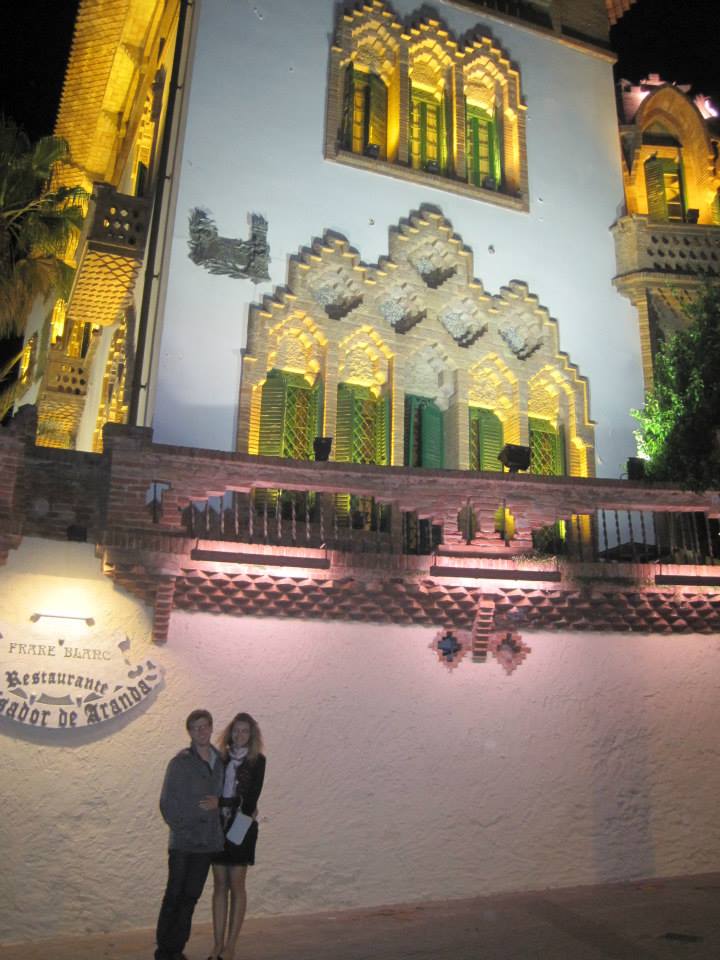Every nook and cranny of Barcelona has a story – has a history – and has a great curbside cafe from which you can grab a seat and soak in the immediate surroundings.
David and I enjoyed many evenings during his first semester at school, familiarizing ourselves with out-lying Gaudi residential buildings during our night-time runs. As we lived away from the main action hub of the city during that first year, we discovered we were anything but removed from the amazing creative flares that were signature Antonin Gaudi. Along the quiet streets of the Sarria neighborhood, dragon gates demarcated a Gaudi designed entrance – with the hidden door handle being none-other than the tongue of the protruding dragon head!
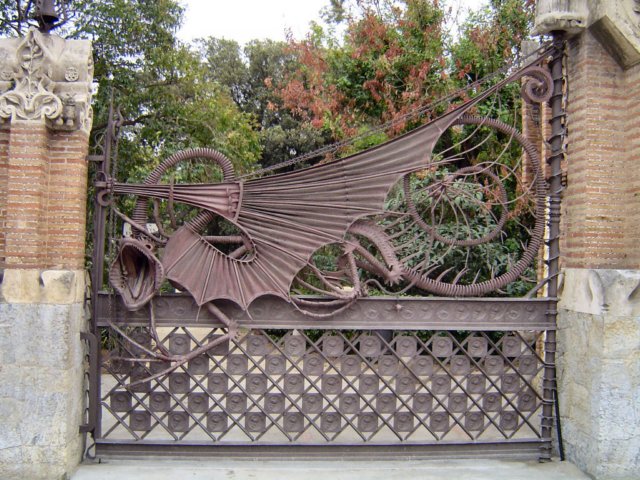
Of course, the main Gaudi buildings are not to miss – perhaps the most internationally iconic is the Sagrada Familia Church – still under construction – 100 years later – and 20 years to go!….but the wonderful surprise is that beyond the facade, the interior of the stunning structure is complete and open for tours and viewing – a MUST! On one unbelievable occasion, David and I signed up for gratis tickets to see tenor Andrea Bocelli in concert inside the Sagrada and had a nearly front-row seat!!! It was a true pinch-me evening! The church was packed with dignitaries for an evening with the Barcelona symphony orchestra and Andrea’s voice resounding inside the cavenous walls lined with colorful stained glass windows….and as Gaudi had designed, we were sitting in a forest of trees (columns).

La Pedrera and Casa Batllo are the two other main Gaudi buildings that draw visitors for not only their undulating eye-catching facades, but the internal marvels that these ‘homes’ are — and right in the heart of the city along Passeig de Gracia. These buildings are stunning both day and night, adding color, flare and endless wonder at the futuristic vision of Gaudi – are the balconies to look like bones? prison bars? teeth? tree trunks? Endless starring and contemplating are permitted.
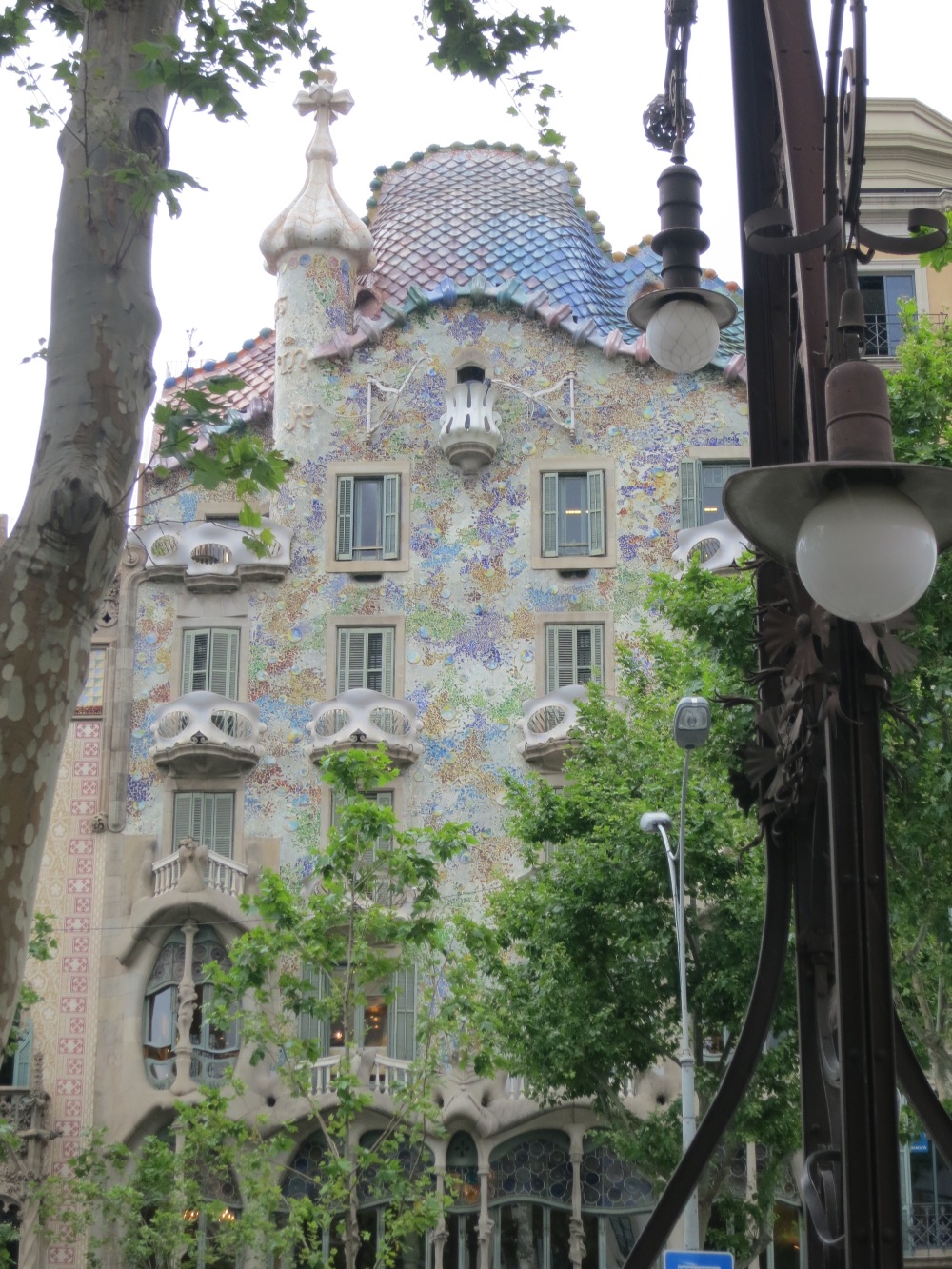
TIP: Purchase tickets on-line ahead of time and avoid the lines….you can usually pick a set time for a tour. Also, it is definitely worth spending the extra money for the audio-visual tour offered at Casa Batllo – fantastic new technology which allows you to look around the rooms as you walk through and see images as the room would have appeared when used as a furnished home. Parc Guell – another wonderful architectural park setting is now ticketed (up until one year ago, the park was a free public meeting place). The Parc is a beautiful setting with a lot to peruse – colorful tile mosaics, lush trees mixed in with stone slanted columns creating wave-like imagery, views of the city, Gaudi’s home -and as you stroll along, listen to Spanish Guitar players dotted along the pathways.
A rival of Gaudi was modernisme architect Lluis Montaner – designing in the Catalan Art Nouveau style of the time – Montaner buildings are likewsie, standouts along Barcelona streets. Known for his signature oversized florets and colors – almost ‘Bellagio-esque’ – be sure to step inside Casa Furster Hotel along Passeig de Gracia for a peek at his interior work and stay for either a rooftop cocktail or a pricey lobby bar live jazz break. A bit of a trek further outside of the main city center is the city’s oldest hospital, Hospital de Sant Pau – an architectural masterpiece of shining tiles, intricate designs, elegant gardens and even a peak into the large open wards where Gaudi died in 1926. The setting is a showcase of artistic liveliness – unlike any sterile hospital in the U.S.
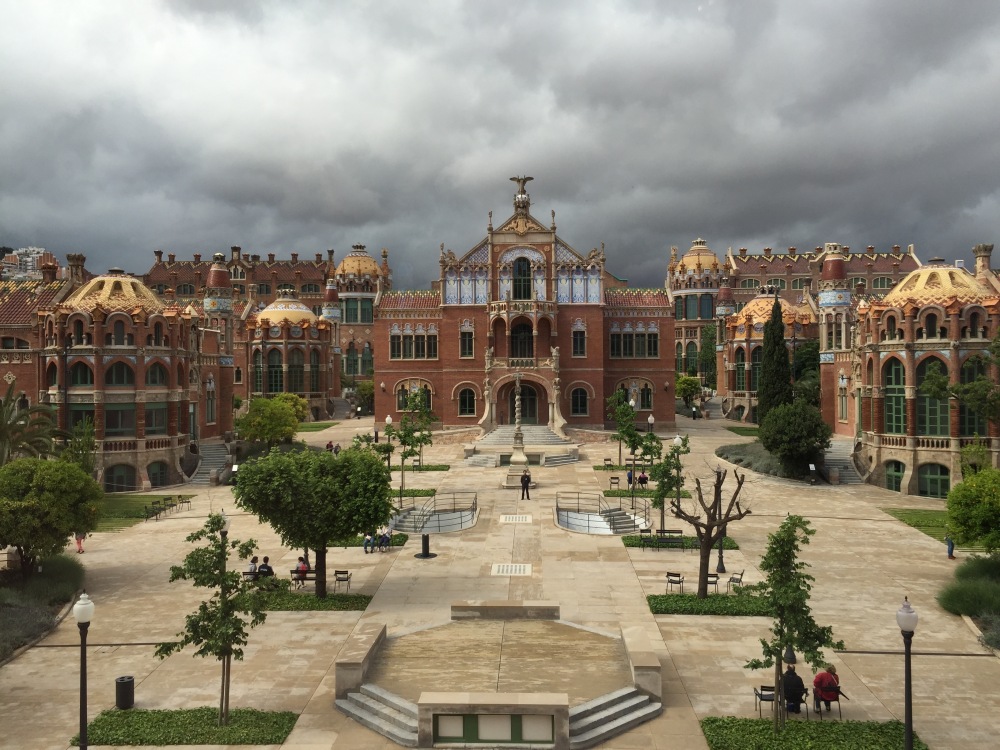
TIP: Combine the wonder of stunning architecture and colors with a memorable musical evening at the Palau de Musica The setting, built in 1908, is a UNESCO World Heritage Site and combines jaw-dropping detail with international talent. David and I visited here with his parents for an evening listening to a 16 year old piano prodigy from Poland – a two-hour concert of pure marvel in the most beautiful of buildings.
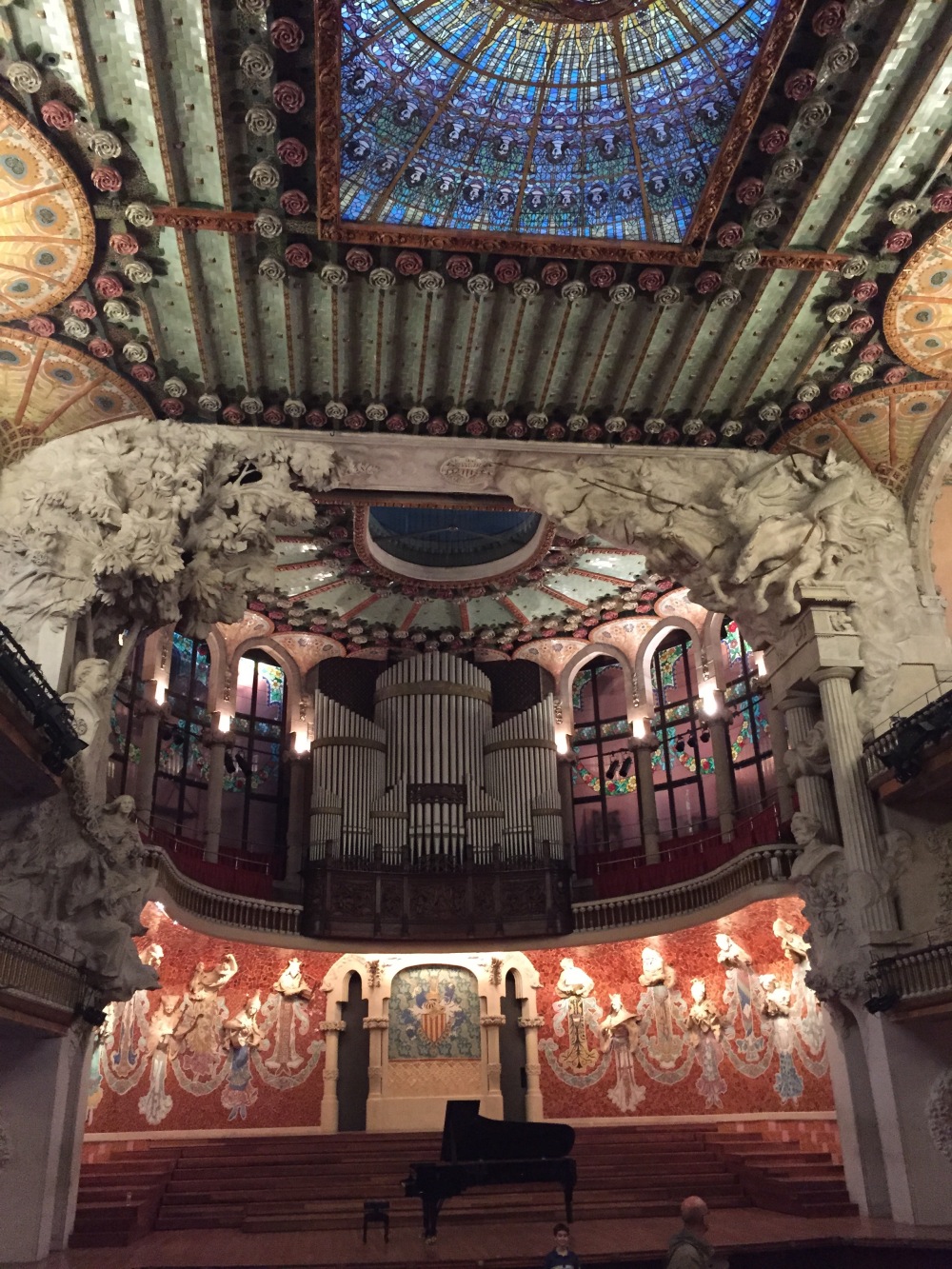
The Gothic Quarter (Barrio Gotico) holds treasures which you will remember for the remainder of your life — histories which have seen conquering by the Visgoths, Romans, Jewish quarter destruction in 1391….welcome to dark, twisting, narrow streets that lure you in with specialty store-fronts, surprise vibrant squares with street artists playing Spanish Guitar or blowing bubbles the size of your whole body, old tavernas – no windows, no dress shirts required, just a thirst for some serious cervezas. Some of the buildings here date back to the 11th Century – be sure not to miss the Main Gothic Cathedral (including the private gardens filled with swans) – I attended weekly Mass here (naturally in Catalan, of which I really only understood ‘Dios’ and ‘Amen’), but that aside, every time I stepped into the church, under the heavy vaulted ceilings adorned with gilded side altars, I had goosebumps and truly felt humbled. Close by are portions of standing walls dating back to the time of Roman Rule in Barcelona from 300’s A.D.
For sure, not to miss in the neighboring Born area is the Picasso museum (Museu Picasso) housed in combined old mansions dating from the 13th and 15th Centuries. A surprisingly beautiful look at Picasso’s whole life, you may be amazed to learn of his extremely classical painting talent – as a young teenager, copying the likes of the finest painters from El Greco to Matisse before moving on to Cubism in his later years, eventually making his famed statement “It took me four years to paint like Raphael, but a lifetime to paint like a child.” A quick stop after the museum, wind on down the surrounding alleys for a decadent hot chocolate at Museu de la Xocolata or a glass of cava at the famed El Xampaynet and soak in continued facade details hiding around every tucked away corner.
TIP: Placa Reial is a beautiful “Royal” (Reial) square filled with palm trees and cheery yellow grand buildings lining the open plaza just off Las Ramblas. Several consulates house their offices here and there are plenty of restaurants and bars to chose from – grab an outdoor seat and watch the crowds stream through. There is a fun Flamenco theater here (Southern Spanish dance), Los Tarantos – shows run just 30 minutes in this small space and allow you to carry on with the rest of your evening. There are many peddlers here, so much like along Las Ramblas, keep your purse tucked under your arm and be sure not to get too distracted looking around.
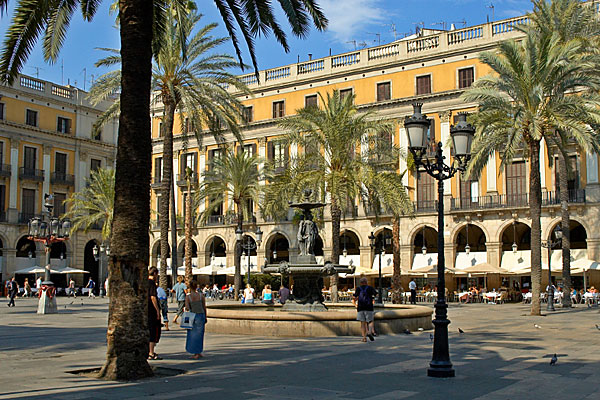
There is a very decadent Moorish influence to many Barcelona edifices. Seen throughout the city and surrounding areas, these buildings are true standouts in their ornateness. North of the main city, in the area of Sant Gervasi, BCN, you can have the amazing experience of feasting at a top restaurant which housed Domincan monks until the early 1900s. El Asador de Aranda is an experience unto its own – feasting on roasted meats (specialty dishes of the house) with views of the city from the penthouse courtyard dining tables, take the detour to experience this setting!
